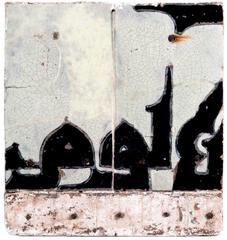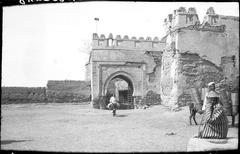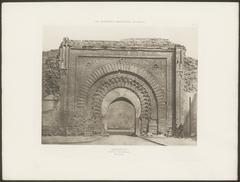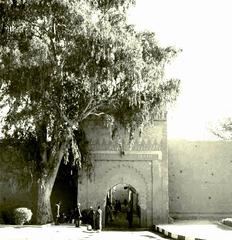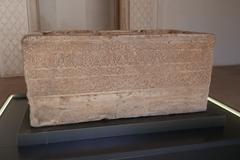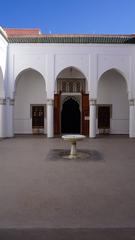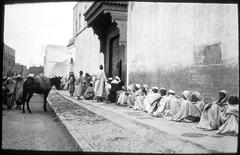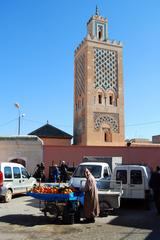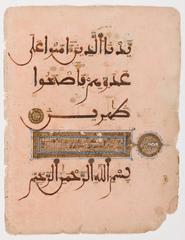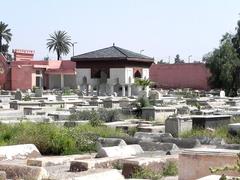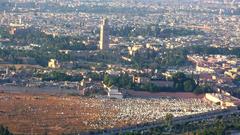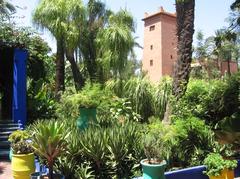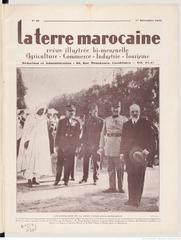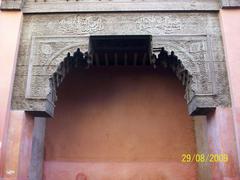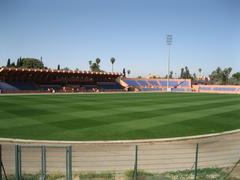Bab El Khemis Marrakech: Visiting Hours, Tickets, and Comprehensive Travel Guide
Date: 15/06/2025
Introduction to Bab El Khemis
Bab El Khemis, or “Gate of Thursday” (باب الخميس), is among Marrakech’s most storied and vibrant historical gateways. Erected in the 12th century under the Almoravid dynasty, it was initially called Bab Fes, serving as the main northern entrance that linked Marrakech with the imperial city of Fes. Over centuries, Bab El Khemis evolved from a defensive structure and trade portal into a bustling social and commercial hub, especially famed for its Thursday market—a tradition that continues today as one of Marrakech’s largest and most authentic flea markets. The gate and the surrounding market remain a living testament to the city’s layered history, blending architectural grandeur with the everyday rhythms of Moroccan life (Wikipedia; My Little Kech; Fleamapket).
This guide delves into Bab El Khemis’s rich historical background, cultural role, practical visitor information—including visiting hours and accessibility—and tips for exploring the market and nearby attractions.
Historical Background
Origins and Early History
Constructed circa 1126 CE under Almoravid emir Ali ibn Yusuf, Bab El Khemis was originally named Bab Fes, reflecting its role as the northern gateway to Fes. The gate was a key point for trade, cultural interchange, and movement of people and goods between two of Morocco’s most influential cities. Its name shifted to Bab El Khemis during the Marinid dynasty, a nod to the thriving Thursday market that took place outside its walls (Wikipedia; My Little Kech).
Architectural Evolution
Bab El Khemis exemplifies Islamic military architecture with thick walls and a bent entrance designed for defense. Its most significant restoration occurred in 1803–1804 under Sultan Moulay Slimane of the Alaouite dynasty, commemorated by a marble inscription. The renovation reinforced its stature and ensured its continued function as a major city access point (Wikipedia).
The Thursday Market and Urban Transformation
The area around Bab El Khemis became synonymous with the Thursday souk, originally a livestock market that drew traders from across the region. Over time, the event expanded, evolving into a permanent flea market (Souk al-Khemis) that now operates almost daily, except Fridays, and features a diverse mix of vendors, artisans, and antique dealers (Fleamapket; Latitude31N).
Religious and Cultural Significance
Near Bab El Khemis stands a qubba, a domed mausoleum marking the tomb of a local marabout (Muslim saint). This spiritual landmark highlights the close relationship between everyday market life and religious tradition within Moroccan urban culture (Wikipedia).
The Market: Social and Cultural Importance
A Social Institution
Historically, the Thursday market was more than a site of commerce; it was a vital social institution where urban and rural communities met, exchanged news, and reinforced social ties. Legal and ethical standards, such as the use of notaries for livestock sales, underpinned the market’s reputation for trust and fairness (Meandering Marrakech).
Diversity and Everyday Life
Bab El Khemis today is a vibrant mosaic of Marrakech society, where locals, rural traders, and artisans converge. The market’s eclecticism is legendary—offering everything from monumental Berber doors, antique furniture, and carpets to electronics, kitchenware, and curiosities. The atmosphere is bustling, particularly on Thursdays and Sundays, and the market’s labyrinthine layout fosters a sense of discovery (Maroc-Maroc; Latitude31N).
Artisanship and the Culture of Reuse
Bab El Khemis is renowned for its culture of craftsmanship and upcycling. Vendors specialize in antique doors, vintage homewares, architectural salvage, carpets, and traditional crafts, making the market a haven for collectors and interior decorators seeking unique Moroccan pieces. The ongoing practice of reusing and repurposing objects reflects both economic resourcefulness and cultural appreciation (Flea Market Insiders).
Community and Interaction
Bargaining is part of the experience, doubling as a social ritual that fosters relationships and animates the market’s dynamic. Food stalls, communal spaces, and the presence of local families underline Bab El Khemis’s role as a center of community life (Marrakech Riad).
Visiting Bab El Khemis: Hours, Access, and Tips
Visiting Hours
- Gate Access: Open 24/7 as a public thoroughfare.
- Souk el Khemis Market: Open daily except Fridays, with peak activity on Thursdays and Sundays. Recommended visiting hours are 8:00 AM – 7:00 PM, with stalls fully set up between 9:00 and 10:00 AM (Fleamapket; TouchScreenTravels).
Entry Fees
- Bab El Khemis Gate and Market: Free entry; no tickets required.
Getting There
- Location: Northeastern edge of Marrakech’s medina, on Route de Bab Khemis (postal code: 40000).
- Transport: Accessible by foot from Jemaa el-Fnaa (20–30 minutes), by taxi (request meter use or pre-agree fare), or by bus. Mentioning police can encourage taxi meter compliance (Travel Morocco Today).
- Directions: From the gate, walk about 300 meters straight ahead (across a small park) to reach the heart of the market (TouchScreenTravels).
Accessibility
Bab El Khemis market area is open-air with uneven ground, narrow alleys, and can be crowded. Early morning visits are preferable for those with mobility challenges. Wheelchair and stroller access is limited.
Market Experience
Expect a lively, authentic Moroccan market atmosphere, featuring:
- Antique doors, vintage furniture, carpets, jewelry, pottery, and architectural salvage
- Everyday bric-a-brac, clothing, mobile accessories, and food stalls
- Regular influx of regional vendors, especially on Thursdays and Sundays
Shopping and Haggling Tips
- Cash Only: Bring Moroccan dirhams in small denominations.
- Bargaining: Offer about half the initial asking price and negotiate with patience and humor.
- Authenticity: The market is primarily local; less touristy than central souks.
- Timing: Visit early for best selection and to avoid crowds.
Safety and Etiquette
- Beware of pickpockets; keep valuables secure.
- Politely decline unsolicited guides unless licensed.
- Confirm taxi fares in advance.
- Dress modestly and ask before photographing people or stalls (a small tip is often appreciated).
Facilities and Amenities
- Limited public restrooms; use café facilities as needed (purchase recommended).
- Food stalls offer local snacks and drinks; choose busy vendors for freshness.
- Minimal shaded seating; prepare for walking.
Weather and Best Visiting Periods
- Ideal months: March–May and September–November for pleasant temperatures.
- Summer: Hot, with midday heat best avoided.
- Winter: Cool and mild, highs around 18–21°C (65–70°F).
Nearby Attractions
- Jardin de Bab el-Khemis: Tranquil garden adjacent to the market.
- City Walls: Historic ramparts at the gate.
- Mellah (Jewish Quarter): Historic district nearby.
- Jemaa el-Fnaa: Marrakech’s iconic main square.
- Ben Youssef Madrasa: Ornate medieval Islamic college (Ben Youssef Madrasa).
- Museum of Marrakech: Showcases local art and history (Museum of Marrakech).
Frequently Asked Questions (FAQ)
Q: Are there entry fees for Bab El Khemis?
A: No, both the gate and market are free to access.
Q: What are the best times to visit?
A: Thursdays and Sundays are busiest and most vibrant; early morning between 9:00 and 10:00 AM is ideal.
Q: Is the market accessible for wheelchair users?
A: The area is challenging due to crowds and uneven ground; early visits and assistance are recommended.
Q: Can I take photos?
A: Yes, but always ask permission from vendors or locals first.
Q: Are guided tours available?
A: Yes, many Medina walking tours include Bab El Khemis; check with local operators.
Responsible Tourism Tips
- Support local vendors; purchase directly from stalls.
- Bring reusable bags to reduce plastic waste.
- Respect the historic gate—do not climb or damage the structure.
- Learn basic French or Moroccan Arabic phrases to enhance interactions.
Conclusion
Bab El Khemis offers an unparalleled view into Marrakech’s dynamic history and vibrant present—a crossroads where centuries-old architecture, living market traditions, and diverse communities come together. Whether you’re drawn by its history, intrigued by its bustling market, or eager to discover authentic Moroccan culture, Bab El Khemis delivers an experience that is both enriching and unforgettable. Careful planning, respectful etiquette, and a spirit of curiosity will make your visit truly memorable.
For up-to-date information, guided tours, and insider tips, download the Audiala app and explore our other guides on Marrakech’s historical sites and medina markets.
